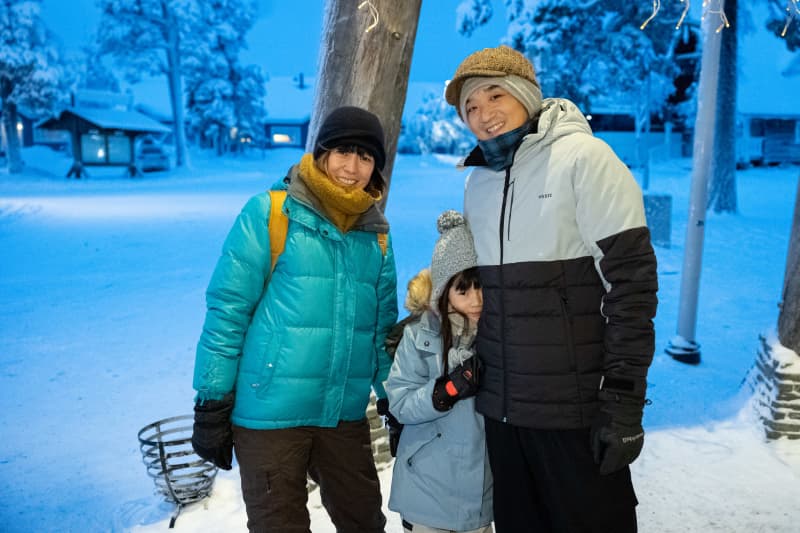Due to visa restrictions, lack of money and inflation, Russians are no longer seen in the tourist centers of Lapland. Asian and European tourists have been able to fill the gap of Russian tourists.
Russian tourists have left Finland and Lapland, but Lapland has been replaced by Asians and Europeans. In other parts of Finland, lost tourists have not been compensated as well as in Lapland.
In the past, the Russians called Saariselkä \”Murmansk the second\ because during the New Year’s holiday the people of Murmansk gladly went to Saariselkä, more than 300 kilometers away.
Now you don’t see Russians because tourist visas are not issued to them.
However, people from Murmansk would not be able to afford to go on vacation to Finland, because prices have also risen in the eastern neighbor. Many of them spend their vacation in their home region.
– All prices have gone up: housing costs, food, everything. If we were to go on vacation to the snow village of Kirovsk Snezhnaya derevnja, tickets would cost hundreds of rubles per person. That would be a large amount for a family of four. Besides, you should go there, and the price of gasoline has also gone up, says Jevgenia Lukovitskaja by phone.
At the moment, Jevgenia Lukovitskaja is on medical leave. The family has two children, a 2-year-old son and a 15-year-old daughter.
Lukovitskaja’s family, like many other people from Murmansk, according to him, spend the New Year’s holidays visiting friends, walking in their hometown and, at most, in the nearby area, i.e. elsewhere on the Kuola peninsula. Traveling to Moscow, St. Petersburg or other parts of Russia, let alone Finland, on vacation would be too expensive.
– Whether the borders are closed and tourist visas are banned or not, traveling to Finland on vacation is impossible due to the rise in prices and lack of money, says Lukovitskaja.
Murmansk has been significant in terms of tourism in Lapland, the city itself has about 300,000 inhabitants, and the Murmansk oblast, i.e. the administrative area, has a total of about 670,000 people.

Since 2014, the Lukovitski family had a tradition of going to Finland for a few days’ vacation every New Year. They usually visited Northern Finland: Rovaniemi, Kemi, Oulu or other places.
Now the tradition is broken. The corona restrictions came into force, and 2019 was the last year to travel to Finland.
– After Corona, we were waiting a lot to be able to travel to Finland again, but then this situation happened, Lukovitskaja says, referring to Russia’s attack in Ukraine and the denial of tourist visas to Russians.
Many tourists from the rest of Russia now come north to the Murmansk region. They are fascinated by the exoticism of winter and the northern lights. The Russian state supports its own domestic tourism projects. Now is the best tourist season in Murmansk, because Russians celebrate the New Year holiday and also Christmas.
*See in the video how Russians spend their holidays at the beginning of January:*
Lapland succeeded in tourism better than the rest of Finland
Russian tourists’ hotel stays in Finland have collapsed. Before the corona restrictions in 2019, almost 60,000 Russians stayed in Lapland’s hotels, while last year by the end of November there were only just over 4,000.
According to Lapland, the number of Russian tourists was also increasing after Russia’s partial business launch and before the end of tourist visas in August–September.
In 2019, Russians accounted for 19 percent of the tourism revenue brought by foreign tourists, but the number dropped to about three percent during the corona period.
– A lot of Russians will not come now and the Finnish tourism industry will no longer rely on Russians for anything. And the situation is such that they don’t even want to go after it, says Timo Lappi.
Unlike the rest of Finland, the tourism industry is doing well in Lapland. According to Timo Lap, more and more tourists are coming to Lapland, especially from the Netherlands, Italy, France, Denmark and Poland.
– Long-term work has been done in northern Finland. Tourist areas and entrepreneurs have understood how to put things together. They have been able to make up for the absence of Russian, Chinese and Japanese tourists. Lapland has succeeded very well in attracting tourists from elsewhere, but the rest of Finland has not succeeded, especially southern Finland. In Helsinki, we are one third behind in terms of hotel stays, says Timo Lappi.
